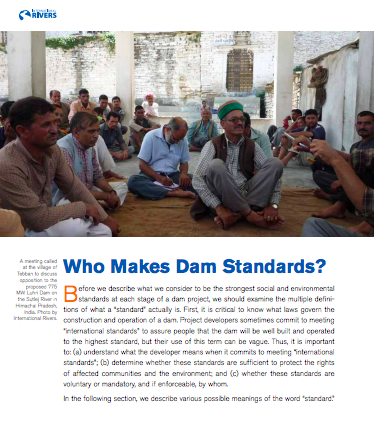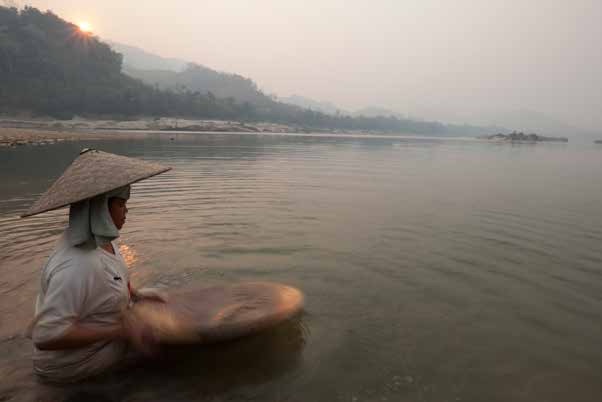Background
In many countries, the most applicable means of protection for people affected by dams are national and local laws. But too often, laws alone are not strong enough to protect the rights of affected communities.

Increasingly, companies, banks, and governments commit to follow internationally-recognized standards. Some of these standards are voluntary, and sometimes the financing or support for a dam project is conditional upon complying with them. But what exactly are dam standards, who makes them, and how can civil society use them?
The Guide
Our guide, “Dam Standards: A Rights-Based Approach” attempts to summarize the strongest social and environmental standards related to each stage of a dam’s project cycle: from strategic planning, to project analysis, to implementation, operation, and dam decommissioning.
The guide takes the position that the most effective standards are those that safeguard the rights of dam-affected people, avoid risks, and allow the public to hold governments, institutions, and companies accountable. Some of the topics described include International Human Rights Law, Integrated Resources Planning, Strategic Environmental Assessment, Gender Impact Assessment, Cumulative Impacts Assessment, Free, Prior, and Informed Consent, and others.

However, as with any standard, a policy commitment is only as good as the results of its implementation on the ground. Too often, dam builders and financiers make commitments on paper, only to follow business-as-usual in practice. That’s why we hope that this guide can help build the capacity of civil society organizations to monitor, track, and hold dam builders and financiers commited to high standards before, during, and after any dam is built.
